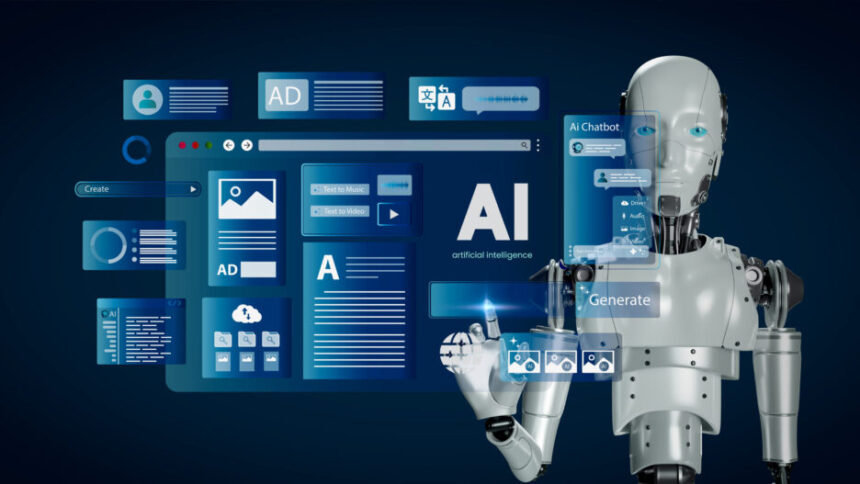Your development team just secured approval for a $2 million AI initiative. The excitement is high, but the reality sets in quickly: building AI agents that truly deliver business value isn’t just about picking the right model. It’s about architecting a tech stack that scales from proof-of-concept to enterprise-grade deployment without collapsing under complexity.
Choosing the wrong tools at this stage can result in months of rework, budget overruns, and brittle systems that require constant human intervention. In fact, Gartner reports that 85% of AI projects never make it past the pilot stage, largely because organizations underestimate the importance of foundational tech stack planning.
If you want your AI agents to move beyond demos and actually transform customer experience, operations, or decision-making, you need to carefully evaluate every layer of the stack, from the core models to the orchestration frameworks and monitoring systems.
Foundation Model Selection and Integration
The choice of underlying language models forms the cornerstone of any AI agent architecture, influencing everything from response quality to operational costs. Enterprise teams must balance model capabilities against deployment requirements, cost structures, and integration complexity.
Modern AI agent development typically involves combining multiple models rather than relying on a single solution. This approach allows optimization for specific use cases while maintaining flexibility for future enhancements and model improvements.
Model Architecture Considerations
Selecting appropriate foundation models requires understanding the specific capabilities needed for your use case:
- Parameter size optimization: Balancing model intelligence against computational requirements and response latency
- Domain-specific fine-tuning: Choosing models that can be customized for industry-specific terminology and workflows
- Multi-modal capabilities: Incorporating models that can process text, images, and structured data when required
- API stability and versioning: Ensuring long-term compatibility and predictable upgrade paths
The decision between hosted model APIs and self-deployed solutions impacts everything from data privacy to scaling costs. Hosted solutions offer rapid deployment and automatic updates but may limit customization options, while self-deployed models provide greater control at the expense of infrastructure complexity.
Enterprise teams increasingly adopt hybrid approaches that combine multiple model types for different agent functions. A single agent might use a large language model for conversation, a specialized model for code generation, and a lightweight model for simple classification tasks.
Integration and Orchestration Frameworks
Effective AI agents require sophisticated orchestration to coordinate between models, data sources, and business systems:
- LangChain implementation: Utilizing chain-of-thought reasoning and tool integration for complex multi-step operations
- LlamaIndex deployment: Optimizing retrieval-augmented generation for enterprise knowledge bases
- AutoGPT architectures: Building autonomous agents capable of goal-oriented task execution
- Custom orchestration development: Creating specialized workflows that align with specific business processes
The orchestration layer determines how effectively agents can access external data, execute business logic, and maintain conversation context across interactions. Frameworks like LangChain provide pre-built components for common patterns, while custom development offers maximum flexibility for unique requirements.
Modern orchestration systems must handle error recovery, retry logic, and graceful degradation when individual components fail. This resilience becomes critical for production deployments where agent downtime directly impacts customer experience or business operations.
Data Architecture and Knowledge Management
AI agents are only as effective as the data and knowledge they can access. Building robust data architectures that support real-time agent operations while maintaining security and compliance requires careful planning across multiple technical domains.
The architecture must support both structured data from enterprise systems and unstructured knowledge from documents, conversations, and external sources. Custom AI agents need seamless access to this information while maintaining appropriate access controls and audit trails.
Vector Database and Retrieval Systems
Modern AI agents rely heavily on vector-based knowledge retrieval to provide contextually relevant information:
- Vector database selection: Choosing between solutions like Pinecone, Weaviate, or Chroma based on scale and performance requirements
- Embedding strategy development: Optimizing text chunking, embedding models, and similarity search algorithms
- Retrieval-augmented generation: Implementing RAG patterns that combine stored knowledge with generative capabilities
- Knowledge graph integration: Connecting relational knowledge structures with vector-based retrieval systems
The retrieval system performance directly impacts agent response quality and latency. Poorly designed vector databases can cause agents to provide outdated information or fail to find relevant context for user queries.
Hybrid retrieval approaches that combine vector similarity with traditional search methods often deliver superior results for enterprise applications. These systems can leverage existing search infrastructure while adding semantic capabilities that improve result relevance.
Real-time Data Integration
Production AI agents require access to current business data to provide accurate, actionable responses:
Real-time integration presents significant technical challenges, particularly around data consistency, latency management, and system reliability. Agents must access current customer information, inventory levels, and business metrics while maintaining acceptable response times.
- API gateway architecture: Managing connections to multiple enterprise systems with appropriate rate limiting and error handling
- Event-driven data updates: Implementing streaming data pipelines that keep agent knowledge current without overwhelming system resources
- Caching and synchronization: Balancing data freshness requirements against system performance and reliability
- Schema evolution management: Handling changes in data structures without breaking agent functionality
The integration architecture must accommodate the diverse data formats and API patterns typical in enterprise environments, from REST APIs to message queues to database direct connections.
Deployment and Infrastructure Considerations
Moving AI agents from development to production requires infrastructure that can handle unpredictable load patterns while maintaining consistent performance and availability. The deployment architecture impacts everything from response latency to operational costs.
Enterprise AI agents must integrate seamlessly with existing security, monitoring, and deployment pipelines while providing the specialized infrastructure required for model inference and data processing.
Scalability and Performance Architecture
Production AI agent deployments face unique scaling challenges that traditional applications rarely encounter:
- Auto-scaling strategies: Implementing horizontal scaling that accounts for model loading times and memory requirements
- Load balancing optimization: Distributing requests across model instances while maintaining conversation context
- Caching layer design: Reducing model inference costs through intelligent caching of responses and intermediate results
- Performance monitoring: Tracking model inference times, memory usage, and request throughput across the system
The infrastructure must handle sudden spikes in agent usage without degrading response quality or availability. This often requires pre-warming model instances and implementing sophisticated traffic management.
Container orchestration platforms like Kubernetes provide the foundation for scalable AI agent deployments, but require specialized configuration for GPU resources and model-specific requirements.
Security and Compliance Implementation
AI agents processing enterprise data must meet stringent security and compliance requirements:
Security considerations extend beyond traditional application security to include model-specific risks like prompt injection, data leakage through model outputs, and unauthorized access to sensitive training data.
- Access control integration: Implementing enterprise SSO and role-based permissions that respect existing security policies
- Data privacy protection: Ensuring agent interactions comply with GDPR, HIPAA, and other regulatory requirements
- Audit trail maintenance: Logging agent decisions and data access for compliance and debugging purposes
- Model security hardening: Protecting against adversarial attacks and prompt manipulation attempts
The security architecture must balance protection requirements against agent functionality, ensuring that security measures don’t prevent agents from accessing the data they need to operate effectively.
Monitoring and Optimization Systems
Production AI agents require specialized monitoring and optimization approaches that go beyond traditional application performance management. Understanding agent behavior, performance patterns, and improvement opportunities requires purpose-built observability systems.
Performance Monitoring and Analytics
Effective AI agent monitoring encompasses multiple dimensions of system and business performance:
- Response quality tracking: Measuring agent accuracy, relevance, and customer satisfaction across different interaction types
- Cost optimization analysis: Monitoring model inference costs, API usage, and infrastructure expenses to optimize resource allocation
- Error pattern identification: Detecting systematic issues in agent responses or integration failures that impact user experience
- Usage pattern analysis: Understanding peak load times, common query types, and resource bottlenecks that inform scaling decisions
Advanced monitoring systems provide real-time visibility into agent performance while maintaining historical data for trend analysis and capacity planning.
The monitoring infrastructure must handle the high-volume, diverse data generated by AI agents while providing actionable insights for both technical teams and business stakeholders.
Continuous Improvement Processes
AI agents improve through systematic analysis of performance data and user feedback:
The optimization process involves both automated model fine-tuning and manual review of agent interactions to identify improvement opportunities. This requires infrastructure that supports A/B testing, gradual rollouts, and rapid rollback capabilities.
- Feedback loop implementation: Capturing user ratings, corrections, and preferences to guide agent training
- Model performance analysis: Identifying degradation patterns that indicate the need for retraining or architecture updates
- Business metric correlation: Connecting agent performance to business outcomes like customer satisfaction and operational efficiency
- Automated optimization: Implementing systems that can adjust agent parameters based on performance data
The improvement process must balance the need for better performance against system stability and consistency requirements.
Conclusion
Building production-ready custom AI agents requires strategic decisions across multiple technology domains, from foundation model selection to monitoring infrastructure. The tech stack choices made during initial development will impact system performance, maintenance costs, and scaling capabilities for years. Successful implementations focus on creating flexible, observable architectures that can evolve with both business requirements and advancing AI capabilities.
The key to success lies in understanding how different technologies interact within the broader system architecture, rather than optimizing individual components in isolation. Organizations that invest in robust technical foundations while maintaining focus on business value delivery will find their AI agents become increasingly valuable assets that drive competitive advantage through superior customer experiences and operational efficiency.


